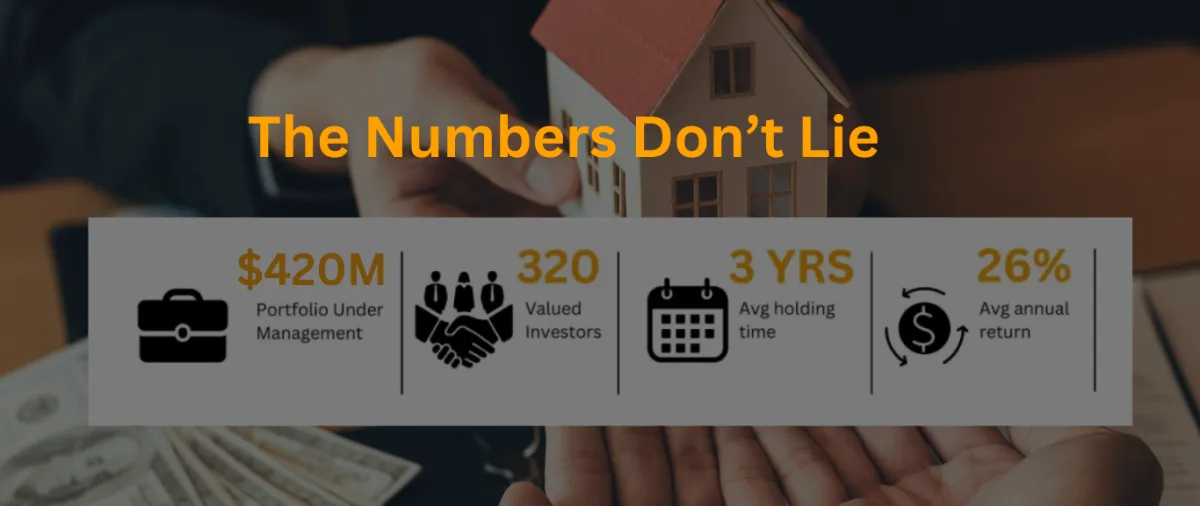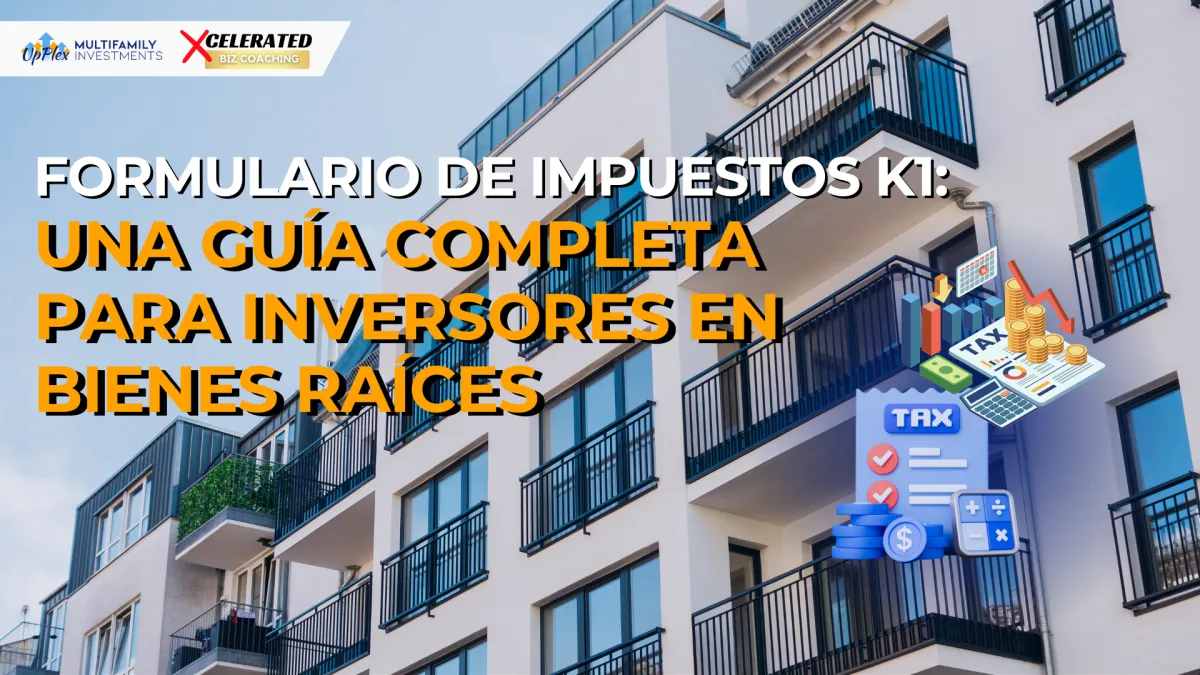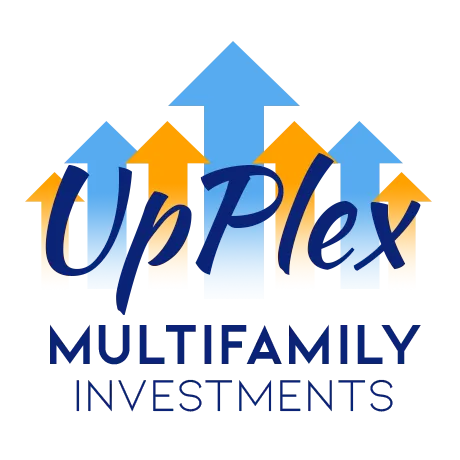The Up Plex Mission
Elevating others by providing wealth-building, passive investment opportunities through real estate.
It’s a known fact that owning real estate can be one of the best passive investment vehicles for you. More specifically, apartment buildings and commercial real estate. However, it also comes with an incredible amount of complexities in trying to acquire such assets and we’ve found that to be the reason most beginner investors shy away from pursuing.
So we set out to make it more attainable for investors to invest in these incredible wealth-building assets with confidence. As a limited partner, you get to leverage our time, network, and decades of experience to create peace of mind with every investment you make with us. We do our best to mitigate as much risk as possible. So much so that we won’t offer an opportunity that we aren’t investing in ourselves.
The Up Plex Mission
Elevating others by providing wealth-building, passive investment opportunities through real estate.
It’s a known fact that owning real estate can be one of the best passive investment vehicles for you. More specifically, apartment buildings and commercial real estate. However, it also comes with an incredible amount of complexities in trying to acquire such assets and we’ve found that to be the reason most beginner investors shy away from pursuing.
So we set out to make it more attainable for investors to invest in these incredible wealth-building assets with confidence. As a limited partner, you get to leverage our time, network, and decades of experience to create peace of mind with every investment you make with us. We do our best to mitigate as much risk as possible. So much so that we won’t offer an opportunity that we aren’t investing in ourselves.

Chris Linger
Principal
Chris Linger has an MBA, twenty seven years of active duty Navy services (ret), now full-time apartment syndicator (underwriter and asset management). Mentor to hundreds of aspiring investors.

Maricela Soberanes
Principal
Maricela has been investing in Real Estate since 2006 in Austin TX. She successfully grew a personal rental portfolio before becoming a full-time syndicator. She’s a Navy veteran, self-published author, and a medical missionary to third world countries.

Chris Linger
Principal
Chris Linger has an MBA, twenty seven years of active duty Navy services (ret), now full-time apartment syndicator (underwriter and asset management). Mentor to hundreds of aspiring investors.

Maricela Soberanes
Principal
Maricela has been investing in Real Estate since 2006 in Austin TX. She successfully grew a personal rental portfolio before becoming a full-time syndicator. She’s a Navy veteran, self-published author, and a medical missionary to third world countries.
Our Success Formula

Underwriting & Negotiating
Detailed underwriting determines the amount of negotiating that can be done with a seller on price and terms. Our experience allows us to properly analyze an asset and mitigate as much risk as possible for our investors.

Contract Review / Due Diligence
We have established the best legal and due diligence teams for our syndications. This allows us to simultaneously expedite two incredibly time-consuming tasks that most beginning investors struggle with.

Closing & Reassessment
There is more to closing than just signing on the dotted line and handing over the keys. There is an equal amount of critical work that needs to be completed soon after to ensure the success of a syndication.

Enacting Business Plan / CapEx
We identify and prioritize the necessary projects and execute them based on funding and critical need. Simultaneously, our expert CapEx team gets to work by coordinating with asset and property managers to assist in stabilizing the property.

Stabilization / Refinance
This process usually takes just over 2 years (depending on the market) and involves everything from completing CapEx, to ensuring organic fair market rent growth, to managing tenant turnover, all while working to decrease expenses.

Sale/Disposition
When it comes time to sell, we prepare the property to show as cost-effectively as possible. Once sold, we ensure that we properly close out business transactions and 3 months after the sale, we deliver all sales proceeds (return of capital) to our investors.
Our Success Formula

Underwriting & Negotiating
Detailed underwriting determines the amount of negotiating that can be done with a seller on price and terms. Our experience allows us to properly analyze an asset and mitigate as much risk as possible for our investors.

Contract Review / Due Diligence
We have established the best legal and due diligence teams for our syndications. This allows us to simultaneously expedite two incredibly time-consuming tasks that most beginning investors struggle with.

Closing & Reassessment
There is more to closing than just signing on the dotted line and handing over the keys. There is an equal amount of critical work that needs to be completed soon after to ensure the success of a syndication.

Enacting Business Plan / CapEx
We identify and prioritize the necessary projects and execute them based on funding and critical need. Simultaneously, our expert CapEx team gets to work by coordinating with asset and property managers to assist in stabilizing the property.

Stabilization / Refinance
This process usually takes just over 2 years (depending on the market) and involves everything from completing CapEx, to ensuring organic fair market rent growth, to managing tenant turnover, all while working to decrease expenses.

Sale/Disposition
When it comes time to sell, we prepare the property to show as cost-effectively as possible. Once sold, we ensure that we properly close out business transactions and 3 months after the sale, we deliver all sales proceeds (return of capital) to our investors.

Check Out Our Latest Blog

Formulario de Impuestos K1: Una Guía Completa para Inversores en Bienes Raíces
Invertir en bienes raíces es una forma popular y lucrativa de generar ingresos pasivos. Sin embargo, viene con su propio conjunto de desafíos, especialmente cuando se trata de la documentación fiscal. Uno de los documentos más importantes para los inversionistas en bienes raíces es el formulario de impuestos K1. En este artículo, proporcionaremos una guía completa sobre los impuestos K1 para inversionistas en bienes raíces.
¿Qué es un formulario de impuestos K1?
Un formulario de impuestos K1 es un documento fiscal que informa los ingresos, ganancias, pérdidas y deducciones de una sociedad, una corporación S o un fideicomiso. Los inversionistas en bienes raíces que invierten en sociedades o corporaciones S reciben un formulario K1 cada año de la entidad. El formulario K1 detalla la parte de los ingresos, ganancias, pérdidas y deducciones de la entidad que corresponde al inversionista, lo cual luego debe ser informado en la declaración de impuestos personal del inversionista.
¿Por qué es importante el formulario de impuestos K1 para los inversionistas en bienes raíces?
Los formularios K1 son esenciales para los inversionistas en bienes raíces porque informan la parte de los ingresos, ganancias, pérdidas y deducciones de la entidad que corresponde al inversionista. Esta información es crítica para calcular la responsabilidad fiscal del inversionista. Además, los formularios K1 son necesarios para cumplir con las regulaciones fiscales y evitar sanciones.
Cómo leer un formulario de impuestos K1
Los formularios K1 pueden ser complejos y confusos, especialmente para los nuevos inversionistas en bienes raíces. Aquí hay algunos elementos clave a tener en cuenta al leer un formulario K1:
Caja 1 – Ingresos/Pérdidas Ordinarias de Negocios: Esta caja informa la parte del inversionista sobre los ingresos o pérdidas ordinarias del negocio de la entidad. Esta es la caja más importante en el formulario K1 para calcular la responsabilidad fiscal del inversionista.
Caja 2 – Ingresos/Pérdidas Netas por Alquiler de Bienes Raíces: Esta caja informa la parte del inversionista sobre los ingresos o pérdidas por alquiler de bienes raíces de la entidad. Esto incluye ingresos por alquiler, depreciación y otros gastos relacionados con el alquiler.
Caja 11 – Otras Deducciones: Esta caja informa la parte del inversionista sobre otras deducciones que no están listadas en otras partes del formulario K1. Esto puede incluir contribuciones caritativas, gastos de inversión y otras deducciones misceláneas.
Caja 19 – Contribuciones de Capital/Distribuciones: Esta caja informa las contribuciones de capital y distribuciones del inversionista desde la entidad. Esta información es importante para calcular la base del inversionista en la entidad, la cual se utiliza para determinar las consecuencias fiscales de futuras transacciones de capital.
Cómo reportar los impuestos K1 en tu declaración de impuestos personal
Una vez que hayas recibido tu formulario K1, necesitarás reportar la información en tu declaración de impuestos personal. Aquí están los pasos a seguir:
Transfiere la información de tu formulario K1 a tu declaración de impuestos personal. Esto normalmente implica ingresar la información de la Caja 1 (Ingresos/Pérdidas Ordinarias de Negocios) y la Caja 2 (Ingresos/Pérdidas Netas por Alquiler de Bienes Raíces) en el Anexo E (Ingresos y Pérdidas Suplementarias).
Calcula tus ingresos o pérdidas imponibles de la entidad restando las deducciones de los ingresos o agregando las pérdidas. Este monto luego debe ser ingresado en tu declaración de impuestos personal.
Asegúrate de incluir cualquier otra deducción de la Caja 11 (Otras Deducciones) en tu declaración de impuestos personal también.
Lleva un registro de tus contribuciones de capital y distribuciones de la entidad desde la Caja 19 (Contribuciones de Capital/Distribuciones). Esta información será importante para futuros reportes fiscales y transacciones.
Conclusión
Los formularios K1 son un documento crucial para los inversionistas en bienes raíces. Proporcionan información esencial sobre la parte del inversionista de los ingresos, ganancias, pérdidas y deducciones de la entidad. Comprender cómo leer y reportar los formularios K1 es vital para cumplir con las regulaciones fiscales y minimizar la responsabilidad tributaria. Siguiendo los pasos descritos en este artículo, los inversionistas en bienes raíces pueden navegar por los impuestos K1 con confianza y evitar los errores comunes en los impuestos. Recuerda consultar a un profesional de impuestos para obtener asesoramiento específico sobre tu situación fiscal única. ¡Felices inversiones!
¡Felices inversiones, amigos!
Estas oportunidades no duran mucho tiempo. Únete a estas oportunidades para diversificar tus ingresos.
🚀 CONECTEMOS🚀

🚀 Suscríbete a nuestro canal de YouTube y únete a la comunidad de buscadores de conocimiento.
▶️ SUSCRÍBETE AQUÍ ▶️
Invierte con nosotros
🚀 ENLACE🚀
DEJA UNA RESPUESTA




